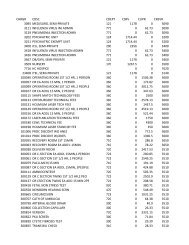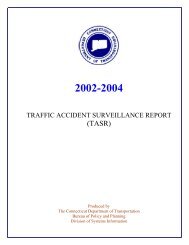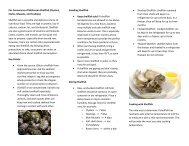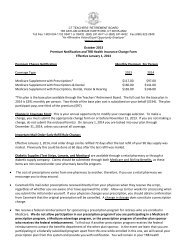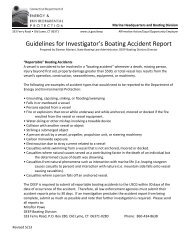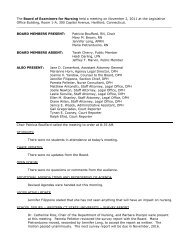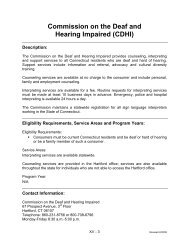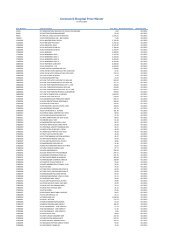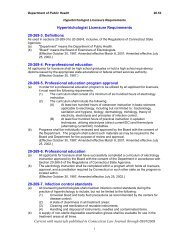Public Act 490 Guide - CT.gov
Public Act 490 Guide - CT.gov
Public Act 490 Guide - CT.gov
You also want an ePaper? Increase the reach of your titles
YUMPU automatically turns print PDFs into web optimized ePapers that Google loves.
APPENDIX F: REAL ESTATE TAXES AND GRAND LIST<br />
PA<br />
<strong>490</strong><br />
APPENDIX F: REAL ESTATE TAXES AND GRAND LIST<br />
Grand List: The Grand List is an inventory of all taxable property<br />
(and exempt property) in a town. It is how a town generates revenue<br />
to run the town. It is what the overall tax rate is based on. A town<br />
also receives federal and state grants and receipts from licenses and<br />
fees as part of its total income. The property tax rate is the rate that<br />
when multiplied by the assessed value of all taxable property, will<br />
produce the revenue needed to balance the budget. Each year's<br />
grand list is categorized into three categories: Real Estate, Motor<br />
Vehicle and Personal Property. The assessor maintains the property<br />
cards for each parcel of real estate located in a town.<br />
Generally, if the Grand List increases, the mil rate will<br />
most likely go down because there is more revenue coming<br />
into the town coffers. If the Grand List decreases the mil rate<br />
will go up.<br />
Assessed Value: All property is assessed at 70% of its fair<br />
market value and this value is what property owners are taxed on.<br />
Mil Rate: The Mil Rate is how property is taxed in Connecticut.<br />
For example, a tax rate of 25 mils means that the taxpayer pays<br />
$25.00 for each $1,000 of taxable property's assessed value.<br />
Example:<br />
The fair market value for a home is $100,000.<br />
The mil rate is 25 mils.<br />
$100,000 x 70% = $70,000 assessed value<br />
$70,000 x .025 (25 mils) = $1,750 annual property tax<br />
Revaluation: Revaluation is supposed to be done every five<br />
years. It is the process of determining what the Fair Market Value is<br />
for all properties in a town. The taxes on this property will be based<br />
on 70% of the Fair Market Value called the assessed value.<br />
After a revaluation, the assessed value of property may<br />
rise, however that does not mean that there will be higher<br />
taxes. Taxes are based on the mil rate and if the assessed<br />
values rise, the Grand List will rise and the mil rate may go<br />
down. This means that taxes may stay the same even though<br />
the assessed property values have increased.<br />
How a Mil Rate is Determined: The Board of Selectman/Town<br />
Council/City Council/etc. need to determine what the new budget<br />
figure is and will include all town salaries, the school budget, any<br />
equipment and other purchases needed, etc. Then all revenues such<br />
as federal and state grants are deducted, leaving the amount that<br />
needs to be raised by taxes if there is a deficit. The mil rate is determined<br />
by this amount.<br />
52<br />
<strong>Public</strong> <strong>Act</strong> <strong>490</strong>: A Practical <strong>Guide</strong> and Overview • http://www.cfba.org/pa<strong>490</strong>guide.htm • Connecticut Farm Bureau Association




